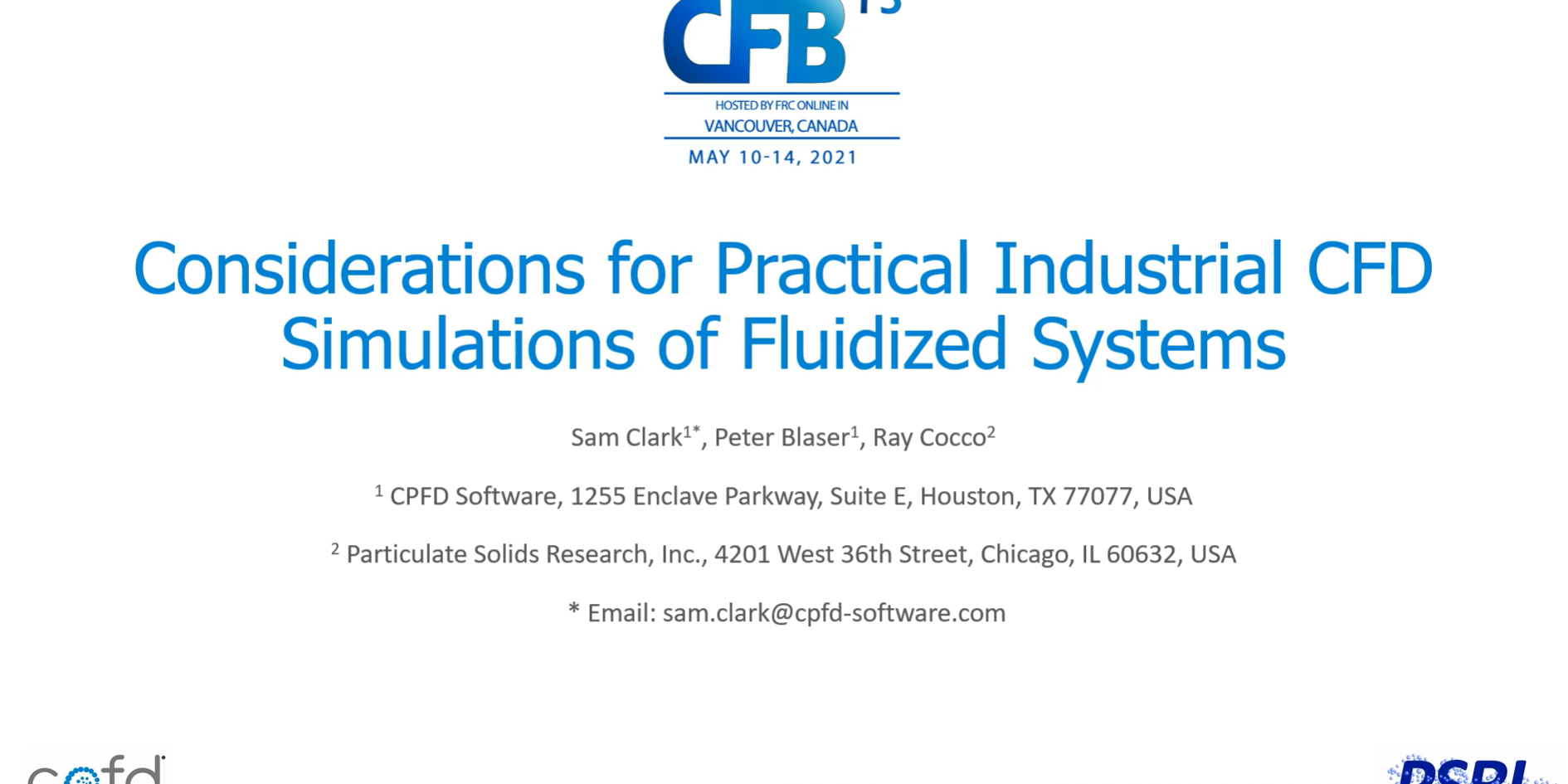About This Presentation
May 10, 2021
Presented by:
Sam Clark – Product Manager – Barracuda Virtual Reactor
Co-authors:
Peter Blaser a, and Ray Cocco b
a CPFD Software, 1255 Enclave Parkway, Suite E, Houston, TX 77077, USA
b Particulate Solids Research, Inc., 4201 West 36th Street, Chicago, IL 60632, USA
Computational Fluid Dynamics (CFD) is based on both fundamentals and empirical models. The fundamental principles, such as conservation of mass, momentum, and energy, are known. Empirical models, on the other hand, have more limited scopes of applicability, and thus are less understood. CFD for fluidized systems, such as fluidized beds or circulating systems, has additional inherent complexity, compared with pure fluid flows. Results can be highly dependent upon empirical models related to fluid-particle, or particle-particle interaction terms, which take the form of drag, collisional, stress, granular temperature, or similar models. The development and validation of these models, which is often undertaken at small test scales, is a topic of significant, current research. Many industrial systems utilizing fluidization, on the other hand, are constructed and operated at scales which may be orders of magnitude larger than the lab-scale or pilot-scale units upon which they are based. Industrial processes such as Fluidized Catalytic Cracking (FCC), polyolefins production, gasification, pyrolysis, or cement manufacture, to name a few, often involve characteristic length scales that can be up to ten meters or greater. This paper and presentation examine the relationship between empirical model development and practical CFD simulations of industrial systems.

